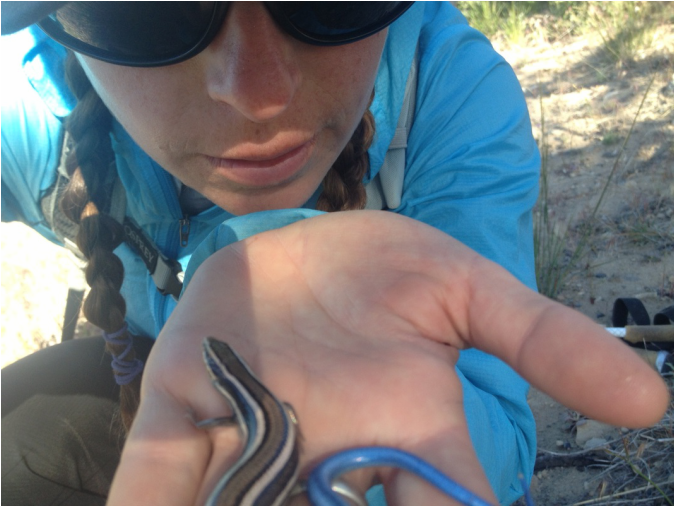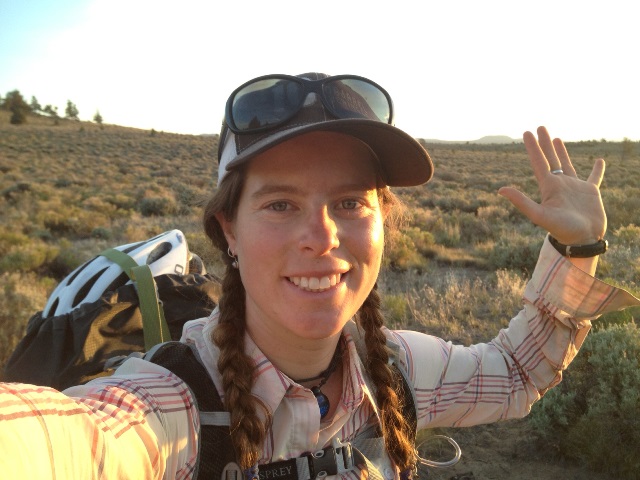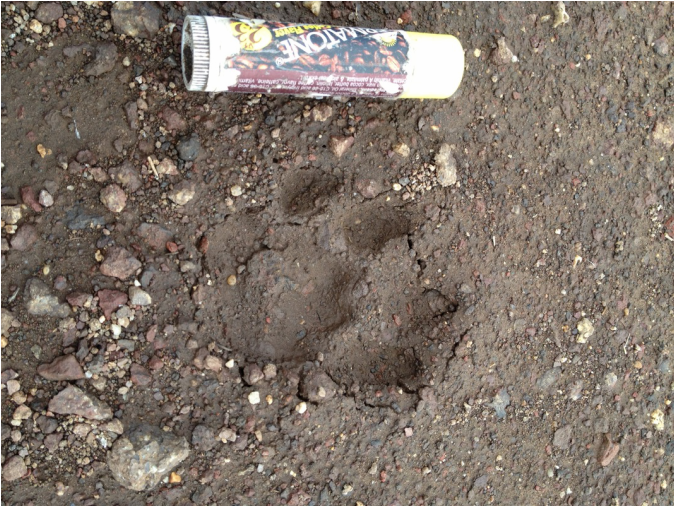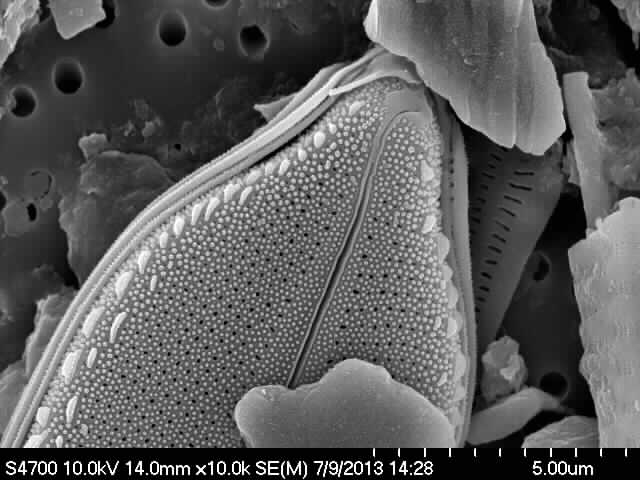Sage Clegg and the “Mysterious Gross Stuff”
Every time I got to take slime samples I felt like I was a six year old kid playing with the mysterious gross stuff I wasn’t supposed to touch. Without fail, pausing to scrape scum off of stream-side rocks or squeeze liquid from bubbly green algae helped me notice something I would never have realized existed. One spring I collected a sample from was up on the side of a steep grassy slope in the Pueblo Mountains. The spring looked unremarkable at first, but as I knelt there scraping at a rock with my spoon, I started to notice there was moss growing between rocks, as well as tiny little yellow monkey flowers. Bees and flies were buzzing by, mites and other small insects were crawling around. By the time I rolled the top of the sample bag closed a whole new universe had been revealed to me, and that didn’t even include the micro-world of diatoms and algae that I had just shoved in a 2oz baggie.
One of my favorite wildlife sightings of the trip was on a hot afternoon in the Trout Creek mountains. I was slogging up a two-track with a bunch of water on my back, and I noticed a Badger running down the track. I stopped and the badger just kept cruising towards me, sniffing from side to side. I was able to grab my camera and snap a pic, but it spooked from the camera sound & vanished into the sage scrub. This was my first badger sighting during a hike, and it was such a treat to see it cruising along just being a badger.
Collecting wildlife observations for ASC helped me pay more attention to the animals I encountered during my hike. It also made me re-define a wildlife observation. I had many miles to walk or bike each day, and I didn’t always stop to jot down every bird or bug. I tried to record every time I saw a bigger mammal, anything I knew was a species of concern (Sage Grouse, Big Horn Sheep), and birds & reptiles I could easily identify.
iNaturalist seemed like a great idea, but on my expedition I had very limited battery and cell service capabilities. My choice to take wildlife observations on my GPS turned out to make my data a big hassle to share with ASC. I think ASC and I have both learned a good bit about converting waypoints into csv files and uploading them to iNat. I think my next adventure’s data will be a bit smoother.
Collecting diatom water samples was straight forward, added less than a half pound of weight to my pack (when full of water), and was super fun. I was able to send in the samples from little post offices along the way. Dr. Bahls sent me a bunch of extra sample baggies and I hope to continue to collect slime from water sources I visit in the future.
ASC is such a cool concept, and I hope to have a project component on all my future adventures.




